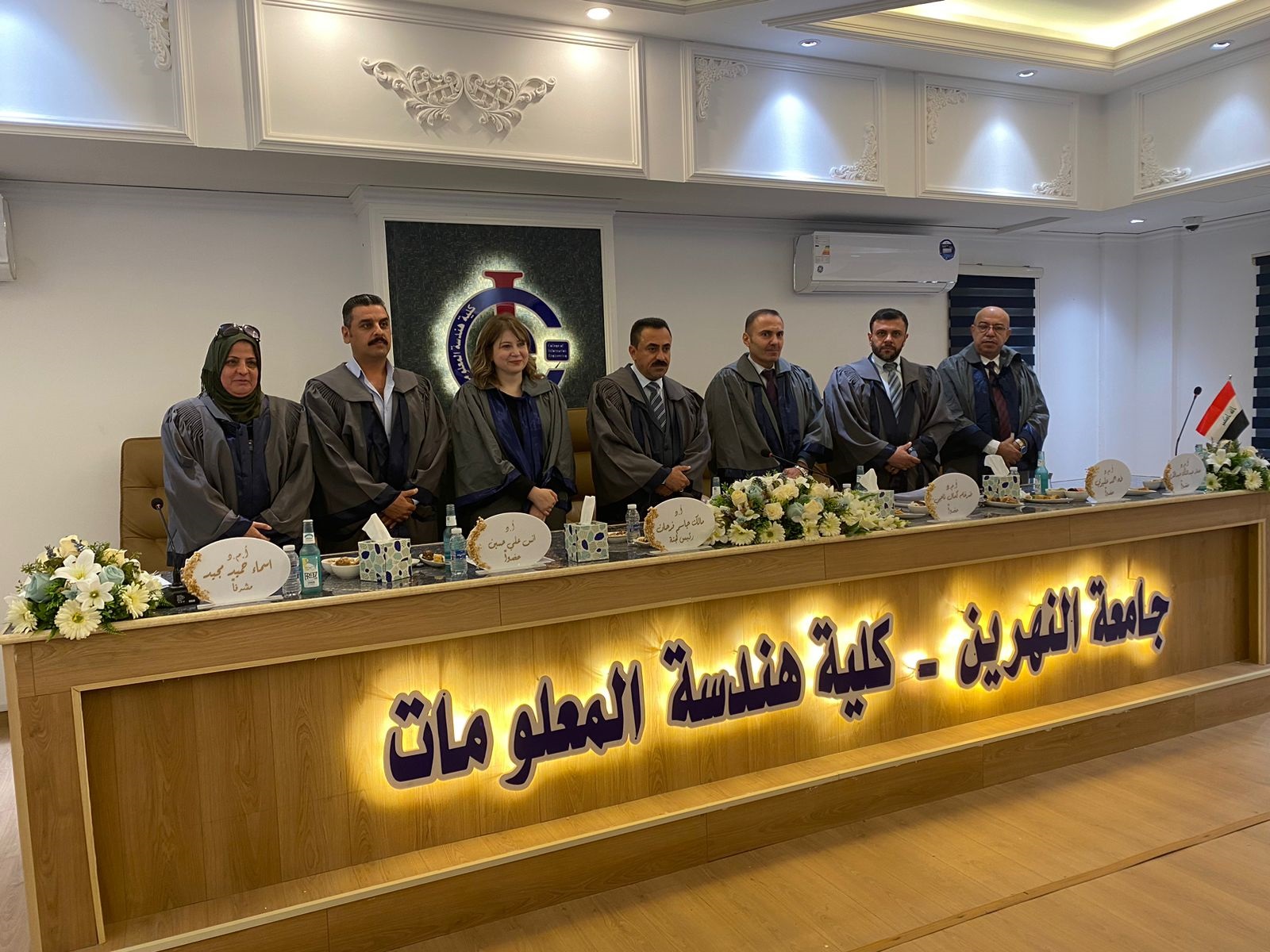Visitors: 25375369 Views
Done By: Electronic and Communications Engineering Department
Post Date: 2024-07-04
Last Browse: 2025-07-03

A
faculty member in the Department of Electronic and Communications Engineering (Assist.
Prof. Dr. Dhirgham Kamal Naji) participated in the membership of the
discussion committee for the doctoral student (Maryam Qutaiba Abdel Razzaq)
from Al-Nahrain University - College of Information Engineering, which took
place on Thursday, 07/04/2024.” About her thesis titled: Equalizer Based
Squinting Beam Effects Removal from Planar Array Antennas for 5G Communications The
discussion committee consisted of distinguished professors: Prof.
Dr. Malik Jassim Farhan / College of Engineering / Al-Mustansiriya University /
Chairman Prof.
Dr. Anas Ali Hussein / Al-Nahrain University / Al-Nahrain Research Center for
Renewable Energy / Member. Assist.
Prof Dr. Dhirgham Kamal Naji / Al-Nahrain University / College of Engineering /
Member Assist.
Prof Dr. Taha Ahmed Aliwi / Al-Nahrain University / Ministry of Higher
Education and Scientific Research / Member. Assist.
Prof Dr. Ammar Abdul Malik Abdul Karim / Al-Nahrain University / College of
Information Engineering / Member. Assist.
Prof. Dr. Asmaa Hamid Majeed / Al-Nahrain University / College of Information
Engineering / Member and First Supervisor Prof.
Dr. Raed Abdel Hamid Abdel Majeed / University of Bradford / United Kingdom /
member and second supervisor The
student fulfilled the requirements for obtaining a doctoral degree with a very
good grade The
dissertation dealt with an in-depth analysis of the effect of “beam
diffraction” in millimeter wave antenna assemblies, including its mechanisms
and effects. Initially, a square-shaped antenna was designed for high-frequency
millimeter wave communications at 26.2 gigahertz with a bandwidth of 2
gigahertz using the CST program. The design was then expanded into linear and
planar configurations to measure the value of mutual entanglement between the
antenna elements in relation to their separation distance. The use of antenna combinations
resulted in an increase in antenna gain to 16.2 dBi for ULA and 25.8 dBi for
UPA. The
nature of the beam deflection was then investigated, and a suitable model was
developed for both ULA and UPA groups. This was followed by a simulation using
MATLAB to evaluate the effect of beam deviation on channel performance.
Quadrature Phase Shift Keying, M-ary Phase Shift Keying, and M-ary Quadrature
Amplitude Modulation were used to complete the comprehensive analysis.
Extensive
simulation results indicate that beam diffraction in millimeter wave
communications reduces channel capacity by 15% at 40 dB power-to-noise ratio
(Eb/No), and potentially increases data error rates. Finally, strategies based
on compensation methods are proposed to mitigate the beam diffraction
phenomenon and improve system performance. Linear compensation correctors, such
as Zero Forcing, Minimum Mean Square Error, are first used to eliminate beam
aberration by treating the antenna array as a frequency-selective channel. Then
a new type of compensation corrector was developed that uses neural networks,
and the performance of the three correctors was tested under different working
conditions of the system. The results emphasized the importance of dealing with
beam deviation as a potential problem affecting the performance of fifth
generation systems and highlighted the possibility of treatment using
artificial intelligence as an effective solution.